Throughout the COVID-19 pandemic, mask safety has been one of the hottest topics. Your mask is the barrier that makes it safer (though still, perhaps, not safe) to be out and about, whether you’re running errands, working, or attending a leisure event.
Whatever your personal risk tolerance, taking proper care of your mask has benefits. It helps minimize the chance of contaminating yourself or others through poor handling of the mask itself. It helps keep you healthier by keeping that barrier clean and intact. And, of course, it helps keep your mask whole and undamaged.
Improper storage of a mask can lead to many consequences. Constant, shifting pressure can break a nose piece, put stress on the elastic, or wear away at the fabric. Moreover, though, the mask is the single most contaminating piece of clothing you own when it comes to COVID-19. Since COVID-19 is a respiratory virus and spreads via the air you breathe, the filter you put in front of your face accumulates all of that risk.
You can’t just wear the mask 100% of the time, of course, nor can you just carry it around in your hand. So, how can you store your mask when you’re not wearing it?
Surely by now, you’ve seen just about every option. People shove them in their pockets or purses. People hang them from their car mirrors. People buy fancy cases from Amazon with built-in UV lights (that probably don’t do anything,) and everything in between. What’s the right way to store a mask?
General Tips for Storage
Before we get into how to store a mask, let’s talk about general safety tips for removing and stowing a mask.
First of all, there’s a specific procedure for removing a used mask, though relatively few people actually follow it the way they should. According to the CDC, the procedure is:
- Undo or stretch the ear loops (depending on if they’re ties or elastic).
- Handle your mask only by the ear loops; do not touch the mask itself.
- Fold the outside corners of the mask together so the inner surface is contained.
- Place the mask in whatever storage location you’re using, and immediately wash your hands.
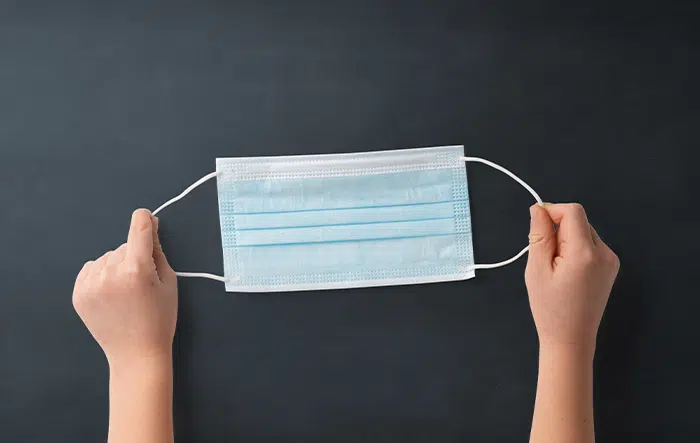
Why fold the mask to contain the inner surface? Well, it’s about how masks work. Remember; masks aren’t there to protect you from other people; they’re there to protect other people from you. You can have and spread COVID-19 for up to a week before developing your own symptoms, which is why it’s so dangerous. People can feel perfectly healthy and still spread the disease.
99% of masks we wear daily do not have face seals or filters, meaning they are largely ineffective at protecting you from the air you’re breathing. Some air gets in around the mask, and of the air that makes it through, it’s not guaranteed to be fully filtered. However, since COVID-19 is transmissible via droplets, when you breathe out, virtually all of the droplets on your breath are caught in the mask.
Thus, the contaminated side of the mask is the inner surface, not the outer surface, unless you’re spending a lot of time in an enclosed area with people who aren’t wearing masks. In that case, both sides are likely contaminated, and it doesn’t matter as much.
When storing your mask, remember to treat a contaminated mask as a biohazard. You don’t want to pull it back out of its bag and wear it again; you will have contaminated the inside of the bag and both sides of the mask. It’s worthwhile to use a backup mask or carry several on hand to rotate throughout your day before washing them all later.
Yes, it’s a hassle to carry several masks to wear throughout the day. This is why disposable masks are so popular; people can take off and throw away their dirty masks and pull out a clean, fresh mask to wear. Of course, this is a pretty big environmental issue we’re going to be contending with over the next decades. There’s really no single, clean solution that doesn’t require personal responsibility or personal risk.
So, about storage. What options do you have for storing a mask safely?
Option 1: Individual Paper Bags
The first option is one of the two generally recommended by the CDC, though we think it’s a little wasteful itself. That option is paper bags.
Paper bags are generally tough and resistant to things like easy damage, but they are susceptible to moisture. So, if you’re in a wet area, if it’s raining out, or if your mask is damp, you don’t want to use this option. On the other hand, if your mask and your environment are both dry, this one works fine.
The CDC recommends using paper bags (or even a fine mesh fabric bag) to temporarily store a mask that you’re going to re-use later. When you need to take off your mask to eat, or drive somewhere, or do some outdoor activity where you don’t need a mask, you can use this option to store your mask. Again, though, only if it’s a dry mask. Damp masks are more likely to contaminate everything around them and should be left until they can be washed.
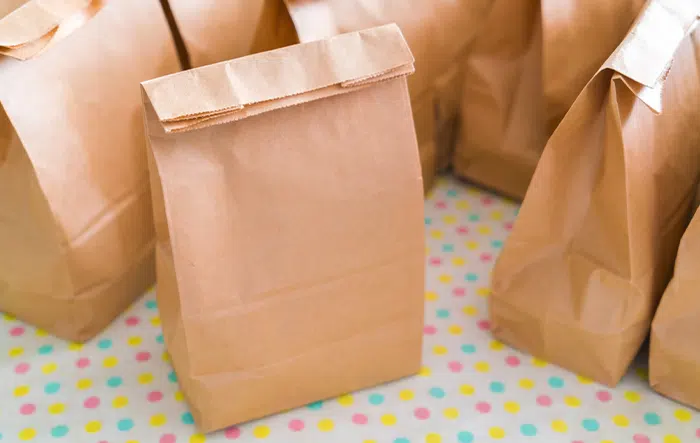
When you take your mask off, handle it as mentioned above, and make sure to keep the inner surface enclosed. Put it in your paper bag while you do whatever it is you need to do. Don’t just set it on a table or shove it in your purse if you can help it. Though, of course, the CDC has contradictory statements on their page.
“If you are taking off your mask to eat or drink outside of your home, you can place it somewhere safe to keep it clean, such as your pocket, purse, or paper bag. Make sure to wash or sanitize your hands after removing your mask. After eating, put the mask back on with the same side facing out. Be sure to wash or sanitize your hands again after putting your mask back on.” – CDC.gov
The idea, generally, is that moisture is the contaminating factor. If your mask isn’t damp, it’s safer to store and re-use. It’s a little questionable how effective this is, but hey, if the CDC recommends it, it can’t be that dangerous, right?
The truth is, there’s very little evidence that fomite transmission happens for COVID-19. Fomite transmission is “surface” transmission; that is, a dirty counter or tabletop spreading COVID-19 to you because someone set their mask down or touched it with dirty hands, and then you did, and then you touched an eye or nose. Though, whether that’s because any surface transmission is overridden by airborne transmission is another story entirely. There’s still a lot we don’t know about this pandemic, even two years in.
Option 2: Individual Plastic Bags
The second option is what the CDC recommends for damp or contaminated masks; plastic baggies. Again, this is pretty wasteful. You’re replacing a disposable mask with a disposable plastic bag, but you’re still creating waste. It’s not like you can easily recycle a plastic bag, either; generally, they’re just considered trash, and even if you can recycle them, sending a contaminated mask in can put other workers at risk. Still, though, if the CDC recommends it, we’re going to mention it.
The idea here is that if your mask is used, damp from your breath, and contaminated (which you should treat it as if it is, even if you don’t feel sick), you should store it in a sealable, airtight bag until you can wash it later.
When you take off your mask, follow proper handling instructions, and fold it up with the inside surface contained. Put it directly into a plastic bag, seal the plastic bag, and store that bag somewhere safe and isolated. Wash your hands after handling your mask, of course.
This is specifically for cases where you won’t be reusing the mask until you’ve had a chance to wash it. Also, you will want to wash the mask as soon as possible. Your breath is contaminated with all manner of microorganisms, and the sealed, damp environment of a plastic bag can be a perfect breeding ground for some of them. You don’t want your mask to get moldy, do you?
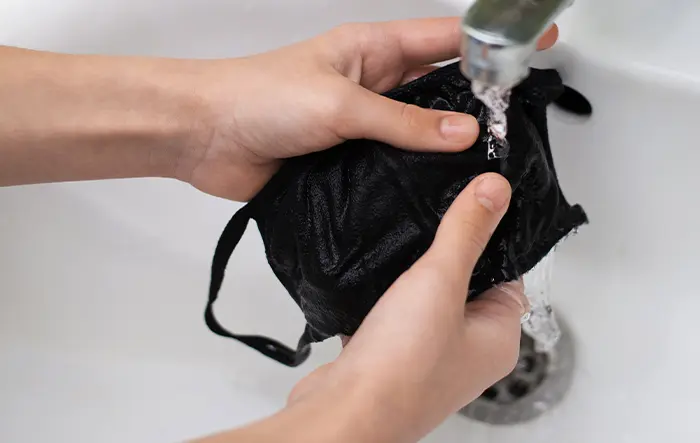
This is most useful for people who have a lot of errands or a long shift to work, and who want to swap their mask out every so often throughout the day. Carry plastic bags equal to the number of masks you’re bringing with you. When you take off a mask, put it into a bag and seal it (preferably with a label, so you know which ones are contaminated), and keep it isolated until you can bring it home and wash it.
Option 3: Mask Cases
The third option is, of course, a case. You didn’t think we’d go two years into a pandemic without companies springing up to make pandemic-related accessories for you to buy, did you? The truth is, mask cases have been available since before the pandemic, but they were a luxury accessory for people who wore masks casually on planes and other such uses, not a necessity brought on by a global disease.
Mask cases come in a variety of forms. There are soft-shelled baggies with zippers, there are plastic boxes that latch, and everything in between. Some are designed to clip to a belt loop or hang around your neck, and others are made to be slipped into a pocket or purse. It’s really up to you which option is most convenient for you. You can see a rundown of them here, though keep in mind that NYMag is making money off of any purchase you make through their page.
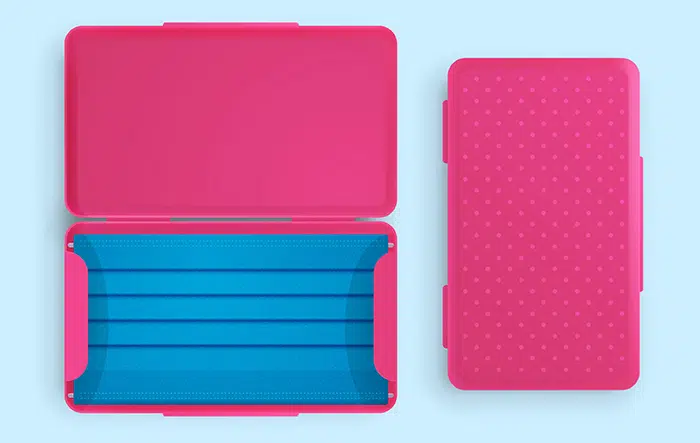
We generally feel that mask cases serve similar purposes to plastic bags. They’re good for storing a contaminated mask until you can wash it. If you sanitize the case as well, you can use it to store your clean mask until you wear it, though once you put a dirty mask in the case, anything inside the case is dirty; no storing multiple clean masks and swapping them out.
The hard plastic cases are generally the best in terms of seals, but they’re a little less convenient to carry around unless you tend to have a large purse or cargo pants.
The silicone mask cases are the most interesting. We haven’t tried them ourselves, so we can’t tell you if they’re a good seal or not, but silicone is easy to sterilize and clean just by tossing it in boiling water for a few minutes, so that’s a decent option.
Option 4: Mask Baskets
For a long-term option, you can set up at home, consider mask baskets. If you buy a stack of cloth masks, you can have a basket for clean masks and a basket (with a lid and a label) for dirty masks. When you get home, toss your dirty mask in the closed basket, and wash your hands. When you leave, pull a clean mask from the clean basket. Periodically wash the dirty masks and put the now-clean masks in the clean basket. Of course, you also want to sterilize the dirty mask basket occasionally.
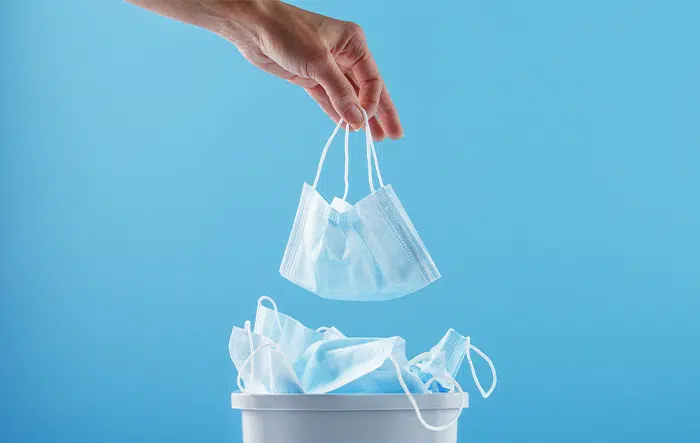
This isn’t an option for storing a mask while you’re out and about, but it can work as an at-home system for keeping your masks straight. It can be pretty difficult to keep track of what’s clean and what isn’t otherwise.
Option 5: A Pocket
The CDC says a pocket is fine storage for a dry mask, but we argue that it can be fine for even a dirty, contaminated mask, in one specific situation. That situation is: if you have nothing else in that pocket, will not be putting your hands in the pocket, and plan to wash the article of clothing at the same time you wash the mask.
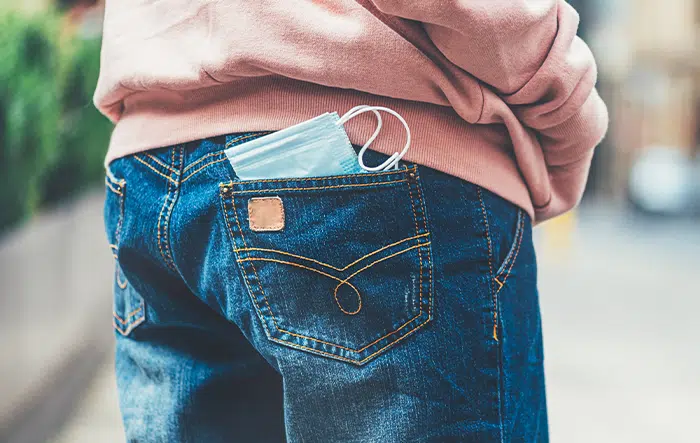
For example, if you have pants with extra pockets, you can dedicate one pocket to being a “mask pocket,” which stores your dirty mask until you get home. When you get home, simply remove the mask and wash both the mask and the pants. Simple, right?
However you choose to store your masks, the key is to make sure you’re wearing them appropriately, handling them carefully, washing your hands, and washing both your masks and the storage containers as necessary. It’s a lot to add to your routine, but it’s a small price to pay if it keeps you and your family safe.
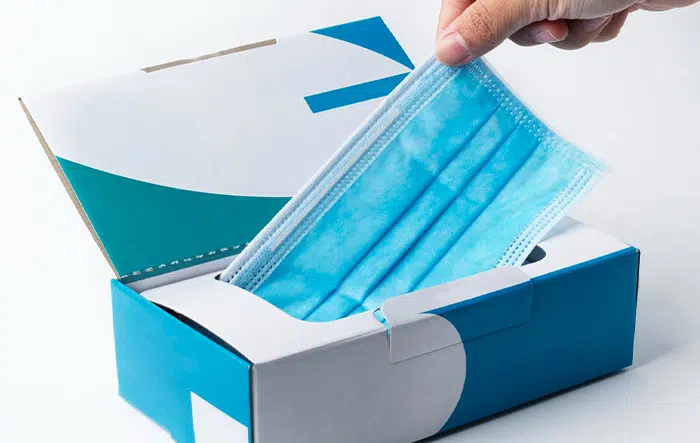


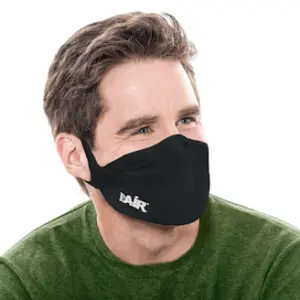
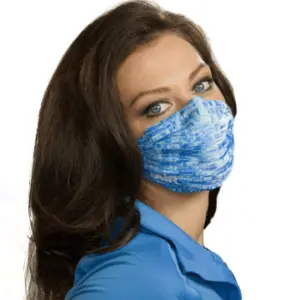

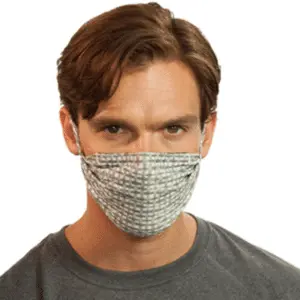






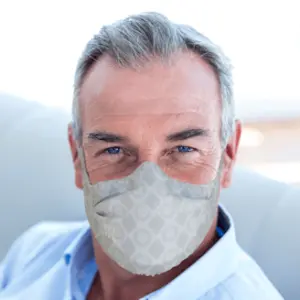





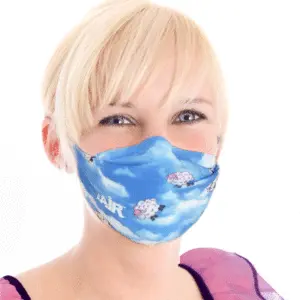
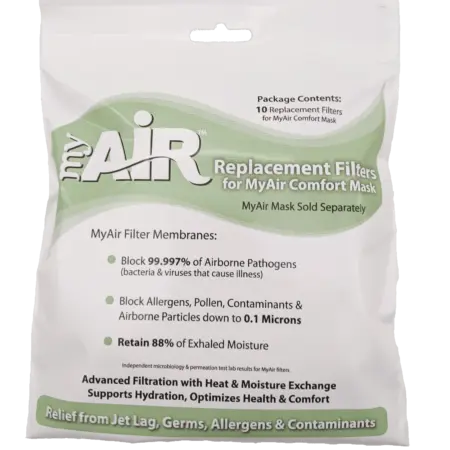
0 Comments